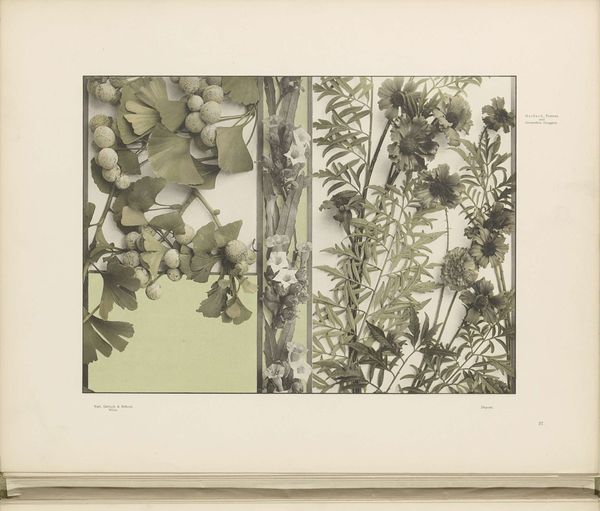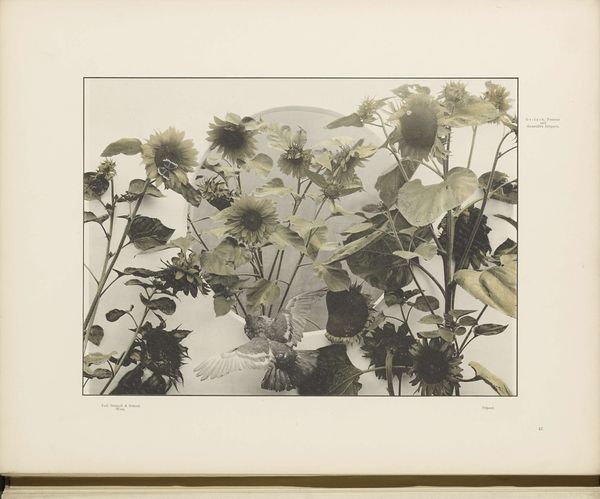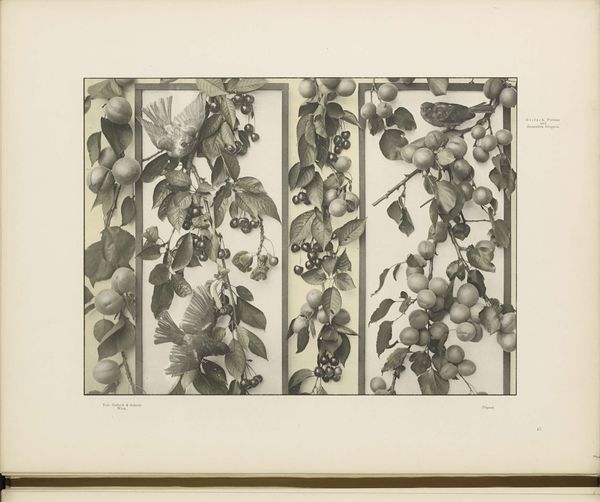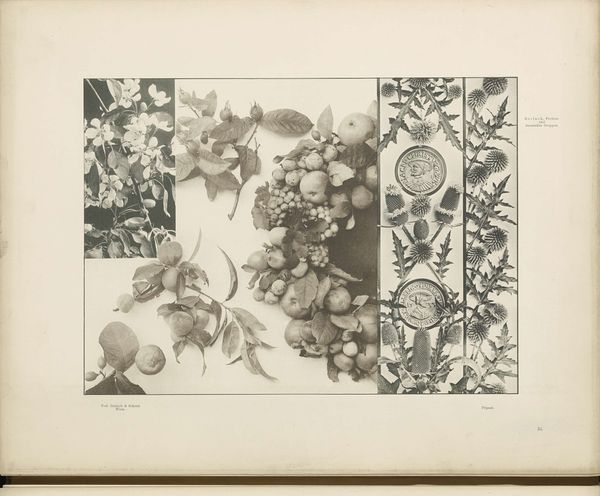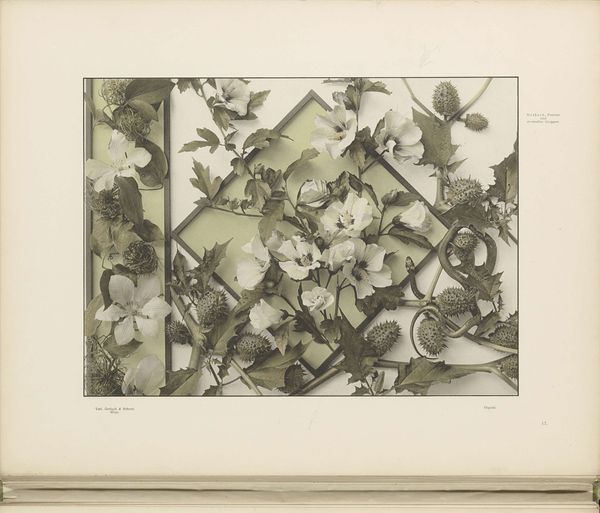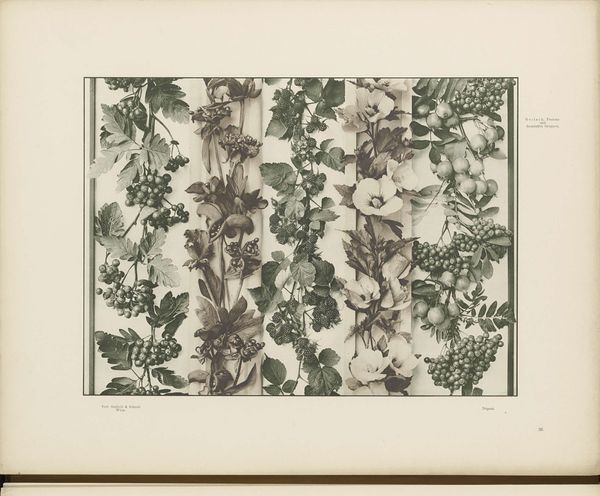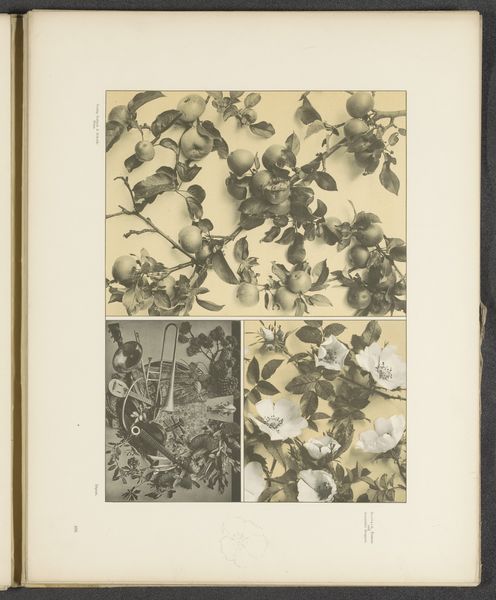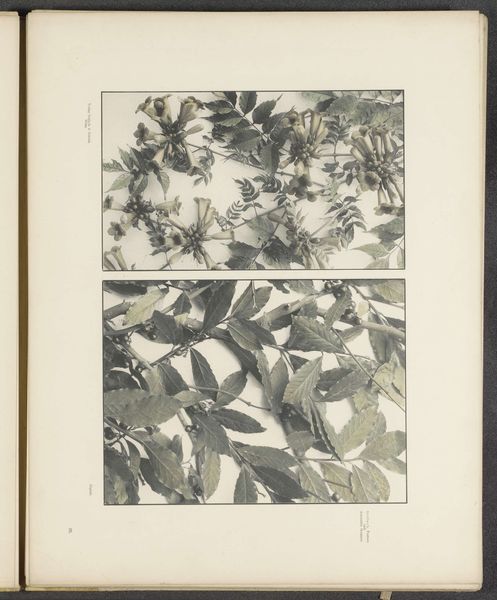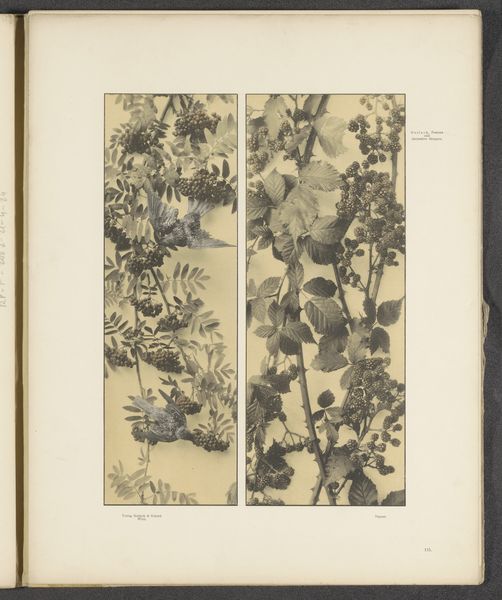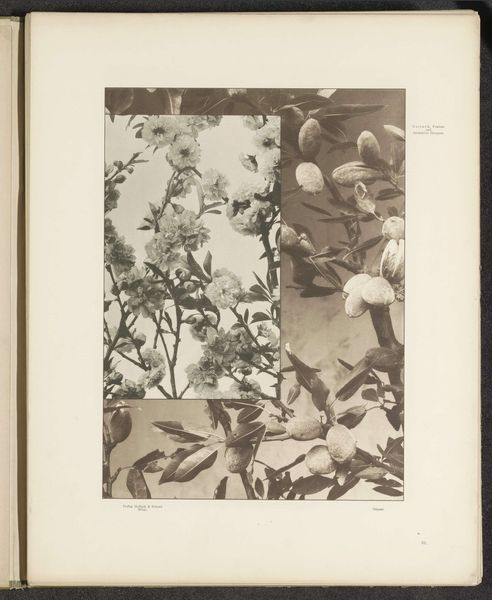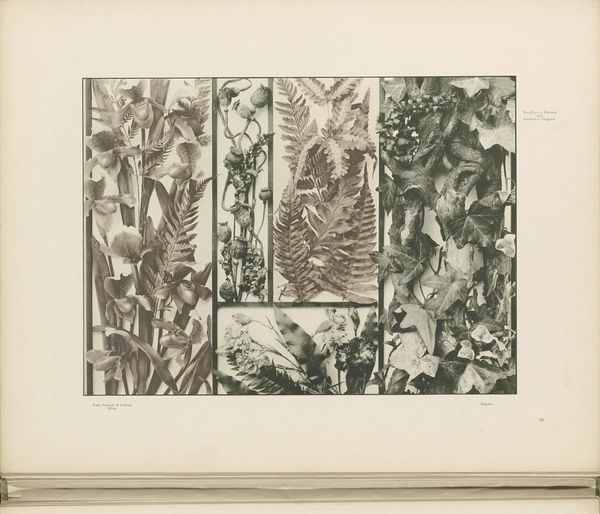
drawing, coloured-pencil, paper
#
drawing
#
coloured-pencil
#
paper
#
coloured pencil
Dimensions: height 214 mm, width 292 mm
Copyright: Rijks Museum: Open Domain
Curator: So, looking at “Druivenranken,” or “Grape Vines,” a colored pencil drawing from before 1897... my initial feeling is almost melancholy. What do you sense? Editor: There is a distinct sense of arrested growth, don’t you think? Not decay, but… suspended animation. I’m immediately drawn to the color palette, these muted greens and browns that feel very much like the quiet desperation of an off-season vineyard. Curator: Quiet desperation—I love that! It’s funny, for me, there’s a certain restrained abundance implied, despite that muted tone. It’s like the vines are brimming with potential, quietly, secretly. Editor: It’s interesting you see abundance because I see a representation of nature under duress, especially if we read it through the lens of labor and class struggles common in the late 19th century. Are these vines a metaphor for exploitation, for the endless cycle of production? Curator: Oh, now you’re giving me a much darker narrative! I hadn’t thought of the social context so explicitly, I was too busy just soaking up that almost tactile sense of texture, especially in the way the colored pencil is worked to create those grape clusters. It's almost dreamlike. Editor: But consider the very physicality of the grape vine—tied, pruned, directed for profit. Doesn’t it invite thoughts about power? The unseen forces that control natural resources and human lives. And, I think of ecological concerns. Curator: It’s amazing how a simple bunch of grapes can branch out into so many powerful narratives! Maybe it's about accepting different readings, like the grapes themselves—some sweet, some tart, all part of the same bunch. Editor: Exactly. These "Grape Vines" aren't simply an innocent study. They are complex symbols, loaded with both latent beauty and unspoken anxieties relevant both in the 19th century and today. The artwork prompts vital reflections on our relationship with nature and one another.
Comments
No comments
Be the first to comment and join the conversation on the ultimate creative platform.
